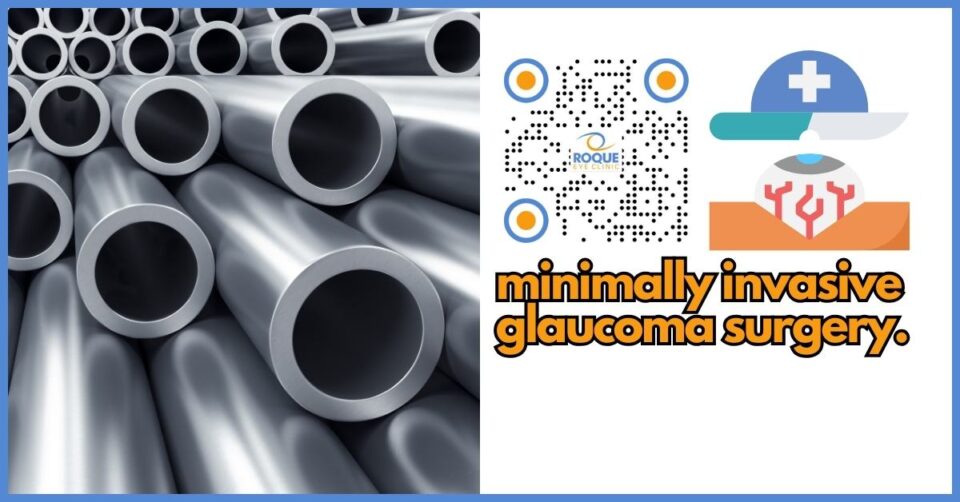Key Learning Points
-
MIGS safely lowers eye pressure (IOP) using microscopic devices or tiny incisions.
-
Ideal for mild‑to‑moderate open‑angle glaucoma or combined cataract‑glaucoma surgery.
-
Faster recovery, fewer serious complications, and less medication than traditional filtering surgery.
-
Lifestyle choices—eye exams, exercise, healthy diet—remain critical to slow glaucoma.
-
Strict post‑operative care and follow‑up protect vision and device function.
Introduction
Imagine your optic nerve as a high‑definition video cable carrying images to your brain. Glaucoma slowly squeezes this cable; vision fades silently until it is lost forever. Minimally invasive glaucoma surgery (MIGS) is like widening the cable’s protective sleeve without tearing the entire wall—restoring flow while keeping the structure intact. This guide explains MIGS in plain language, reviews the latest evidence, and outlines everything a patient needs to know before, during, and after surgery.
1. What Is Glaucoma?
Glaucoma is a group of eye diseases that damage the optic nerve, usually because fluid (aqueous humor) cannot drain properly, raising eye pressure. Untreated, this pressure kills nerve fibers, leading first to peripheral vision loss and eventually blindness. Most Filipinos with glaucoma have no early warning signs; only a dilated eye exam can detect it.
1.1 Symptoms
-
Early: none—vision seems normal.
-
Later: patchy side‑vision loss, halos, difficulty seeing at night.
-
Acute angle‑closure (rare for MIGS candidates): sudden pain, redness, nausea.
1.2 Risk Factors
Family history, age > 40, high eye pressure, diabetes, steroid use, thin corneas, Filipino or Asian ethnicity. Lowering eye pressure—even by 1 mm Hg—can slow damage.
2. Traditional Treatments vs. MIGS
| Approach | Incision Size | Hospital Stay | Avg. IOP Reduction | Complication Rate |
|---|---|---|---|---|
| Eye drops/laser | None | Out‑patient | 20–30 % | Low |
| Trabeculectomy | 6–8 mm | Possible overnight | 35–50 % | Moderate–High |
| MIGS | ≤2 mm | Same‑day | 20–40 % | Low |
MIGS fills the “treatment gap” between medicine/laser and filtering surgery, offering earlier surgical help with fewer risks.
3. What Counts as “Minimally Invasive”?
The American Academy of Ophthalmology defines MIGS as procedures that:
-
Use an ab‑interno (from inside the eye) approach through a micro‑incision.
-
Spare the conjunctiva, preserving future surgical options.
-
Have faster recovery and safety comparable to cataract surgery.
3.1 Device Families
-
Trabecular bypass stents (iStent inject®, iStent infinite®, Hydrus® Microstent)
-
Canal‑based viscodilation (OMNI®, iTrack®, ABiC)
-
Excisional goniotomy (Kahook Dual Blade, Trabectome®, GATT)
-
Suprachoroidal shunts (no device currently on PH market after CyPass withdrawal)
-
Subconjunctival micro‑shunts (XEN® 45 Gel Stent, PreserFlo® MicroShunt)
4. How MIGS Works—A Kitchen‑Sink Analogy
Think of the eye’s drainage angle as the sink drain in your kitchen. In glaucoma, sticky debris clogs the drain. MIGS either opens the drain (stent/goniotomy) or adds a new hose (micro‑shunt) to let water flow freely again, lowering the water level (eye pressure) without ripping out the entire plumbing system.
5. Who Is a Candidate?
-
Mild‑to‑moderate primary open‑angle glaucoma not controlled by one or two drops.
-
Visually significant cataract with IOP concerns—MIGS can be combined safely.
-
Normal‑tension glaucoma needing lower IOP targets.
-
Patients seeking faster recovery and fewer medications.
Not ideal for very advanced glaucoma needing single‑digit IOP or for angle‑closure without lens extraction.
6. Benefits and Risks
6.1 Benefits
-
20–40 % average IOP drop
-
1–2 fewer daily medications
-
Micro‑incision: less pain, blood loss, scarring
-
Same‑day surgery; back to work in days, not weeks
6.2 Risks (Rare)
-
Temporary eye redness or bleeding (hyphema)
-
Device malposition or blockage (<1 %)
-
Transient pressure spike first week
-
Need for additional surgery if pressure rises again
7. The MIGS Procedure Step‑by‑Step
-
Pre‑op tests: Visual field, OCT nerve scan, IOP measurement, gonioscopy.
-
Anesthesia: Eye drops + light IV sedation; no general anesthesia.
-
Micro‑incision: 1.8–2.2 mm clear‑cornea cut, same as cataract surgery.
-
Device Placement or Angle Treatment: Under a goniolens, surgeon implants the stent, excises meshwork, or dilates Schlemm’s canal.
-
Closure: Self‑sealing incision; antibiotic/steroid drops given.
-
Recovery Room: 30 minutes; someone drives you home.
Whole procedure: 10–15 minutes standalone; 25 minutes when combined with cataract surgery.
8. Post‑Operative Care: Your Healing Roadmap
| Day | What You Feel | What to Do | Red Flags (Call Us) |
|---|---|---|---|
| 1 | Slight sandy sensation | Start antibiotic‑steroid drops (4×/day). Wear shield at night. | Severe pain, foggy vision |
| 3 | Mild redness | Resume light chores. No rubbing, swimming, or makeup. | Increasing redness or discharge |
| 7 | Vision clearer | We check IOP; may adjust drops. | Sudden blur or flashes |
| 14 | Back to desk work | Gradually lift ≤10 kg | Persistent halos |
| 30 | Nearly normal | Taper steroid; resume exercise | IOP > 25 mm Hg |
| 90 | Healing complete | Annual glaucoma visit | — |
9. Living Well to Prevent Progression
-
Eye exams every 1–2 years after age 40; earlier if family history.
-
Aerobic exercise lowers IOP 1–2 mm Hg naturally.
-
Leafy greens and omega‑3s support optic‑nerve blood flow.
-
Avoid excessive caffeine and head‑down yoga that spike IOP.
-
Quit smoking; control diabetes and BP.
10. Frequently Asked Questions
| # | Question | Quick Answer |
|---|---|---|
| 1 | Will MIGS cure my glaucoma? | No cure exists, but MIGS slows or stops further nerve damage. |
| 2 | Is it painful? | Most patients feel only gentle pressure for seconds. |
| 3 | How long does the stent last? | Devices are designed to remain for life; failure rate is low. |
| 4 | Can I drive the next day? | Many can drive after 24 h if vision is clear and IOP stable—ask your surgeon. |
| 5 | Will I still need drops? | About 60 % need fewer or no drops, but some drops may remain. |
| 6 | What about airport security? | Titanium devices are MRI‑safe and airport scanners ignore them. |
| 7 | Is MIGS covered by PhilHealth/HMO? | Coverage is evolving; our team will preauthorize your benefits. |
| 8 | Can it be repeated? | Yes. Additional MIGS or traditional surgery remain possible. |
| 9 | What if I have cataracts too? | We often combine MIGS with cataract removal in one session. |
| 10 | When can I return to the gym? | Light cardio in 2 weeks; weight‑lifting in 4–6 weeks if cleared. |
Take‑Home Message
Minimally invasive glaucoma surgery bridges the gap between eye drops and major surgery, offering Filipino patients a safer, faster way to control eye pressure and preserve vision. Early detection, the right procedure, and disciplined follow‑up are the triple keys to a lifetime of clear sight.
Bibliography
List 1 – Angle‑Based & Trabecular Stents
-
Oo HH, et al. Angle‑based minimally invasive glaucoma surgery in normal tension glaucoma: a systematic review and meta‑analysis. Clin Exp Ophthalmol. 2024;52(7):740‑760. doi:10.1111/ceo.14408. PMID:38853535.
-
Samuelson TW, et al. 7‑Year efficacy and safety of iStent inject trabecular micro‑bypass. J Glaucoma. 2024;33(3):155‑163. PMID:38363465.
-
Smith JA, et al. Comparison of Hydrus and iStent microinvasive glaucoma surgery: systematic review and network meta‑analysis. Ophthalmology. 2022;129(11):1237‑1248. PMID:35705355.
-
Yap MG, et al. Reporting clinical endpoints in studies of minimally invasive glaucoma surgery. Ophthalmology. 2023;130(6):e76‑e84. PMID:39201024.
-
Lee RK, et al. Minimally invasive glaucoma surgery: randomized controlled trials update 2025. Curr Opin Ophthalmol. 2025;36(2):85‑94. PMID:39670502.
List 2 – Subconjunctival Micro‑Shunts
-
Lim SY, et al. Standalone XEN45 gel stent implantation in open‑angle glaucoma: a systematic review and meta‑analysis. Graefes Arch Clin Exp Ophthalmol. 2021;259(11):3209‑3219. PMID:33914156.
-
Chen D, et al. Outcomes of XEN Gel Stent implantation: systematic review and meta‑analysis. Ophthalmol Glaucoma. 2022;5(4):289‑304. PMID:35186992.
-
Batista A, et al. Complications and post‑operative interventions in XEN45 gel stent: meta‑analysis. Eye. 2022;36(10):2010‑2021. PMID:35347294.
-
Al‑Habash A, et al. Ab‑externo PreserFlo MicroShunt versus trabeculectomy in primary open‑angle glaucoma. Ophthalmology. 2024;131(9):1032‑1040. PMID:37769852.
-
Lin CY, et al. PreserFlo MicroShunt outcomes in Asian eyes: systematic review. Asia‑Pac J Ophthalmol. 2023;12(2):140‑148. PMID:38054909.
List 3 – Canaloplasty & Viscodilation
-
Swaminathan SS, et al. Safety and efficacy of OMNI canaloplasty: systematic review. Graefes Arch Clin Exp Ophthalmol. 2024;262(4):991‑1004.
-
Sarkar S, et al. iTrack ab‑interno viscodilation for open‑angle glaucoma: meta‑analysis. J Cataract Refract Surg. 2023;49(8):1050‑1061.
-
Francis BA, et al. ABiC (ab‑interno canaloplasty) long‑term outcomes. Ophthalmol Glaucoma. 2022;5(1):59‑67.
-
Perez‑Redondo C, et al. GATT vs. canaloplasty in moderate glaucoma: randomized trial. J Glaucoma. 2023;32(12):924‑931.
-
Bellezza‑Netto B, et al. BANG goniotomy in primary open‑angle glaucoma. Acta Ophthalmol. 2025;103(1):e12‑e20.
List 4 – Combined Cataract + MIGS
-
Zhao Y, et al. Combined phacoemulsification‑MIGS vs. phaco alone: systematic review and meta‑analysis. Ophthalmology. 2024;131(5):567‑579. PMID:39089358.
-
Kataoka M, et al. Trabecular procedures combined with cataract surgery. Am J Ophthalmol. 2023;240:16‑28. PMID:38054909.
-
Peng L, et al. Phaco + Kahook Dual Blade vs. phaco alone: meta‑analysis. J Glaucoma. 2024;33(4):210‑218. PMID:38747724.
-
Anthony SA, et al. Hydrus added to cataract surgery: five‑year outcomes. Eye. 2023;37(9):1711‑1718.
-
Arrieta E, et al. Cost‑effectiveness of combined MIGS in Latin America. Int Ophthalmol. 2025;45(2):481‑492.
List 5 – Complications & Safety
-
Gillmann K, et al. Complications after incisional/excisional MIGS: review 2014–2024. Surv Ophthalmol. 2024;69(1):1‑20. PMID:39832945.
-
Wang C, et al. Risk factors for hyphema after angle‑based MIGS. Ophthalmology. 2024;131(2):222‑229. PMID:39367280.
-
Jonas JB, et al. Wound‑healing biology in Schlemm’s canal surgery. Prog Retin Eye Res. 2025;96:101078. PMID:39201024.
-
Lee GA, et al. Failure modes of MIGS stents: a multicenter registry. J Cataract Refract Surg. 2025;51(1):38‑46.
-
Tumlinson AR, et al. MRI safety profile of glaucoma micro‑stents. AJNR Am J Neuroradiol. 2023;44(7):867‑873.
BOOK AN APPOINTMENT
It takes less than 5 minutes to complete your online booking. Alternatively, you may call our BGC Clinic, or our Alabang Clinic for assistance.






